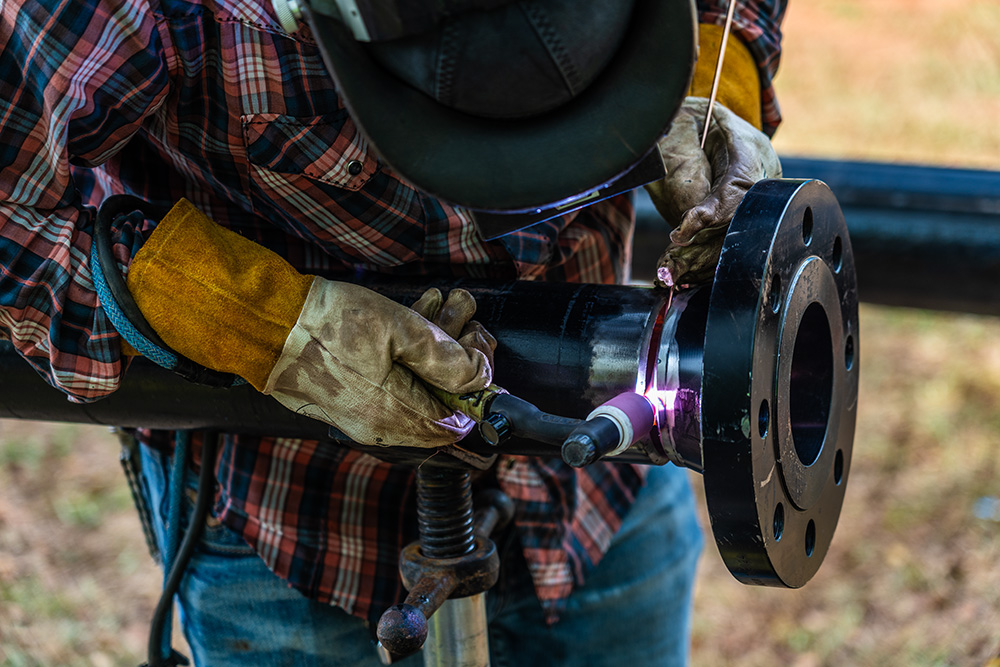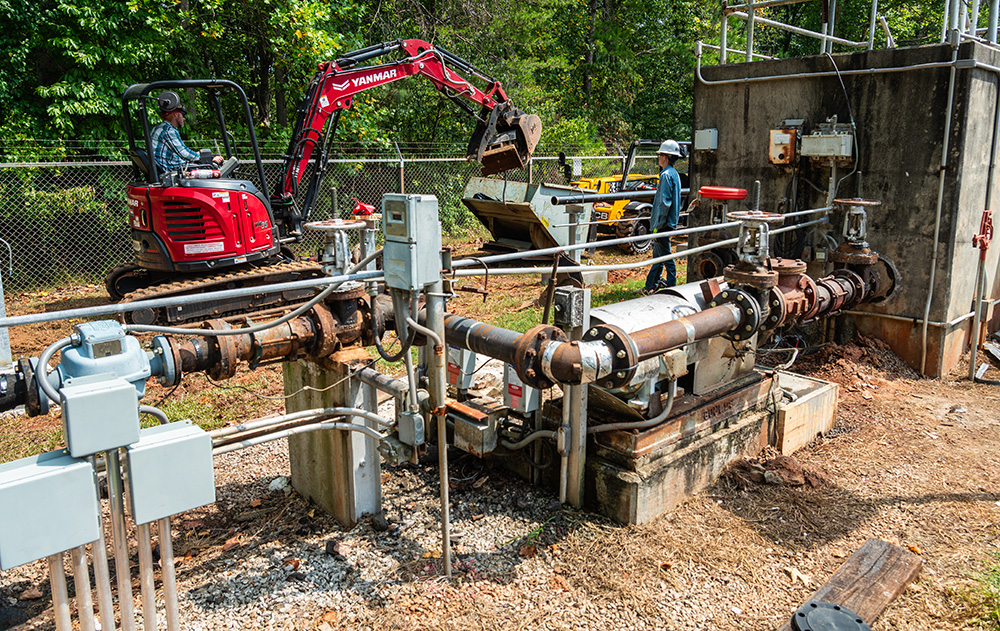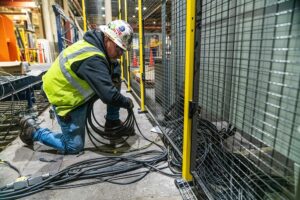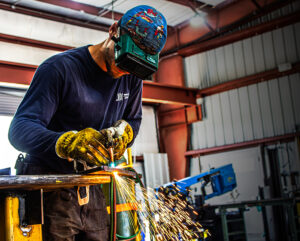JDI’s pipefitting team is working with a chemical manufacturer on their wastewater system, and are putting together some awesome piping welds! We are now performing phase 3 of a turnkey piping upgrade project, and previously completed the foundations in phase 1, and the custom fabrication of the pipe stands in phase 2.
The project is now going through a demolition of the older cast-iron pumps that needed replacing. We procured two new pumps that have 300lb. rated valves to ensure their system can deliver the necessary water without inhibition over the 300′ of piping JDI fabricated.
JDI contributes to our clients’ success by always delivering on what we promise with our self-performing turnkey capabilities!
Stay connected here on our website for more news about the team’s work on this piping project. To see more about process piping and what is involved in a project like this, keep reading below.
What Is Industrial Process Piping?
Process piping is the installation of pipes, fittings, and all other components essential for transporting material from one point to another. It is majorly an industrial application necessary for moving gas, liquid, and solid materials. Process piping is distinct from utility piping, which is plumbing for clean and wastewater. Plumbing involves conveying water for general use, such as drinking and washing. Process piping, on the other hand, conveys material including water and other pressurized fluids that are directly involved in an industrial process.
Process Piping Structure: Components
- Carbon & Stainless Steel Pipes: The pipes you see here are the main components of this wastewater process piping. The type and material of pipes used depend on what is being conveyed. In some processes, you might find pipes color-coded to match the temperature and type of material being conveyed. JDI has so far fabricated and installed up to 300′ of prefabricated 3″ SS304L Resin piping. For durability, most pipes in process piping are metallic. Different metals, including aluminum and stainless steel pipes, are used depending on the temperature and toxicity levels of the materials being conveyed.
- Fittings: Fittings refer to connections between pipes in process piping. Fittings depend on the pipe material and type. They are designed to withstand pressures, temperature, and toxicity levels similar to the pipes on which they are placed. Common fittings include sockets, bends, and elbows. Bends and elbows connect pipes at turning points while sockets connect pipes at straight sections.
- 300lb. Rated Valves: Valves control the flow of fluids, and in this case they must be rated for 300lbs of pressure. They ensure fluids flow in the intended direction at the required speed and volume. There are different types of valves; your choice of a valve depends on the intended purpose. Common types of valves include pressure-regulating valves and isolating valves. Pressure regulating valves (PRV) control the amount of fluid through a section of the process piping. Isolating valves are used to separate certain sections of the system, especially for maintenance.
- Pumps: Pumps are the main component of pressurized process piping systems. They generate a force that conveys fluids to intended destinations. Pumps exist in different sizes and types. They are classified according to their power rating, application method, and volume they can supply at an instance. Submersible pumps are immersed in fluids being pumped.
Other components of piping systems are installed to meet specific needs. For instance, insulators and heat exchangers are installed in high-temperature systems.

Building a Process Piping System: What You Need
Process piping systems are complex to set up — they require specialized skills and standardization for safety and efficiency. When building a system, the following aspects will guide you in making the best decision.
Functionality: What Makes Process Piping Useful
Process piping systems should sufficiently meet the need for which they are installed. Whether the system is functional or not depends on the engineering designs and considerations. Various codes and standards guide the design process. Pipes and material selection should be in line with regulations for the safety of the system and personnel interacting with it. For instance, selected pipe diameters should transport the required fluid volumes without straining the system.
Personnel, Environmental, and Equipment Safety
Safety is a top consideration for all industrial processes. There are different levels of safety, these are checked against industry standards for compliance. Process piping systems should guarantee safety for personnel working nearby. Personnel safety includes protection from exposure to toxins, heat, or injury from broken pipe systems. System components handling toxic materials should be resistant to damage that might lead to exposure. Environmental conservation agencies inspect process piping systems to ensure they pose no risk to the environment.
Maintenance and Operation Costs of the System
Running industrial processes could be expensive — having a high-maintenance process piping system worsens the case. Process piping should be affordable depending on the intended purpose and scale. Using high-quality components prevents frequent breakdowns, lowering the cost of maintenance. Regularly cleaning the system prevents the risk of blockages and corrosion of inner pipe walls. The system design should use shorter pipe sections with minimal bends for fast and effective cleaning.
Process piping plays an essential role in the safety and quality of manufactured items. However, you need a properly designed and built system to achieve the intended purpose fully. Consulting professionals in your industry provide insight into what is needed for your process piping system.
With JDI Industrial, you can access high-quality construction and maintenance services for functional, safe, and cost-effective process piping. Thanks to technological advancements, automation of process piping systems minimizes human interference which might compromise safety and increase maintenance costs.
To find out how we can help you with your project, contact us today.



